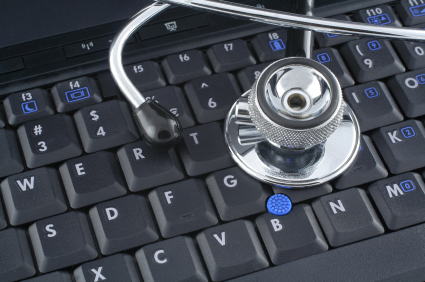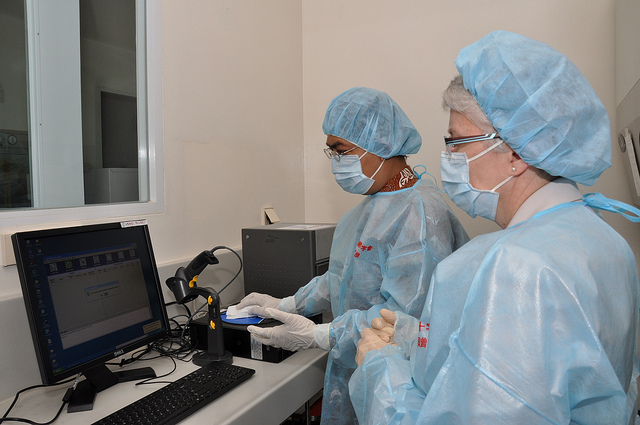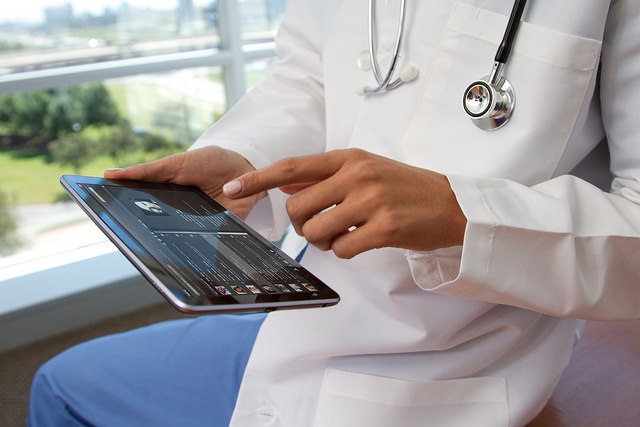The combination of medicine, healthcare and technology are a powerful one. As each year goes by, technology is transforming the landscape in hospitals and other care facilities. From research all the way through to modern treatment, technology is having an enormous impact on the world of medicine. To celebrate this fact, we thought we would take a closer look. Here are a few ways tech is breaking down barriers to health care.
Less suffering
Let’s start with the most obvious way technology has changed things for the better – less suffering. We are lucky to be alive in these modern times, as it is only recently – in relative terms – that medical treatment has been so effective. It wasn’t long ago that any kind of treatment in a hospital was something of a gamble. Infections were common, and a full recovery was often more luck than anything else. However, these days, modern technology is improving treatment on multiple levels. Robots can assist with surgery, for example. Incredible microscopes can help surgeons reach the tiniest parts of the body, too. And, of course, operations are far less invasive thanks to keyhole surgery. Only a couple of decades ago, you could expect to be out of action for weeks – or even months – after an op. Now, many people are on their feet in a matter of days.
Diagnostics
These days, technology can give us a full overview of what is wrong with our bodies. From X-rays through to MRI scans, technology is helping find problems at a much earlier stage and keeping people alive for longer. Diagnostics is one of the areas that has benefited most from technology – of that there is little doubt. Early screenings are integral to doctors trying to improve their patient care plans, and help to provide much better outcomes. Mobile screening is another enormous advance. Just a few years ago, diagnostics had to take place in a hospital, and it could be difficult for people to get there. Now, diagnostic vans and trucks can take that specialist equipment direct into people’s communities. It means more people are accessing the services, and more people getting treatment at an early stage.
Online information
The rise of the Internet – and, in particular, high-speed broadband – means more of us are finding out medical information online. Of course, this can be a good thing, but there are drawbacks. On the one hand, it means we can empower ourselves about different types of treatment, and check our symptoms to see what we might have. However, this can lead to misdiagnosis, of course. Medical information is complicated – even to professionals. So, never skip out seeing your physician. That said, it is an invaluable tool for widening your options, and seeking out help from others with similar illnesses.
Campaigning
One of the most important aspects of healthcare is raising money to fund medical research. And, technology is helping that, too. You only have to look at social media to see some of the amazing achievements made by some charitable organizations. The Ice Bucket Challenge, for example, was a global phenomenon that raised more than $100 million for the ALS Association. Not only that but health care organizations are using platforms such as Facebook to connect with new and current patients. Some may even use them for outreach programs, and even instant chats with nurses. It’s astonishing how quickly things have moved on in this regard, and the trend is even getting a lot of support from senior citizens.
Easier to reach
In years gone by, the only way to see a doctor was to go to a clinic or to arrange a visit. These days, however, technology is making it far easier. You can use services offered by telemedicine companies and have online video consultations. The doctors can also use these services to connect with other doctors and health care professionals without having to go to a hospital. And, even with standard devices like a smartphone, they can access a lot of info. Case studies, databases, and patient histories are all available while on the move.
Databases
It’s worth taking a closer look at databases, as they have changed the healthcare environment by a significant amount. Everything you undergo in a hospital is recorded electronically and can be referenced from anywhere. When you consider the enormous amount of information medical practitioners gather, this is no mean feat. It all leads to more efficient care, and it’s far safer for the patient, too. Nurses and doctors can ensure they are using the exact treatment they need to be, and mistakes are far less common.
Trends
Databases are also handy for seeing and predicting trends in the healthcare industry. Even using a service such as Google can predict things like the potential and consequences of a flu epidemic, for example. As these patterns arise when an outbreak of a certain illness happens, medical experts can react in double quick time. It’s an area that is in constant development, too. The hope is that in the near future, medical companies and organizations will be able to use even more of this info for scientific good.
The iPad
If you’ve been in hospital recently, you may have noticed doctors and nurses walking around with Apple iPads in their hands. There’s a good reason for it, and they aren’t just showing off! iPads are used for all kinds of things, from performing surgery to consulting patients. They are also helping the medical profession start to become a lot less reliant on paper. It’s not unusual for everything from patient notes to booking systems being done on a tablet of some description. It works out cheaper for hospitals, too. All tablets need is a cheap update, which is far less expensive than upgrading an entire system.
Translation
There’s an increasing need for translation services in healthcare, wherever you are in the world. Migrants and holidaymakers from all over the globe all need access to health care – but they can’t communicate with their doctors. In days gone by, the only solution was to bring in an expensive translator to help with communication. Today, however, a physician can use an app and translate the message instantly. When you consider there are 47 million people in the United States who don’t speak fluent English, you can imagine how vital this tool can be.
Home health and fitness
Let’s not forget about all the health and fitness apps the general population can use. There is an enormous range of options, from services like Fitbit to calorie counters. The fitter we keep ourselves, the less pressure we put on the healthcare system. And, of course, the more money can be put into solving the problems of as yet incurable diseases. It’s also worth bearing in mind that the more you take care of yourself, the less you will spend on healthcare. With health insurance premiums on the rise, it’s easy to see how these fitness apps can help almost everyone in the country, young or older. Not just regarding health – but their finances, too.
As you can see, technology is bringing many different advantages to healthcare. Some of them are showstoppers – diagnostics and treatments, for example. But, others are equally as important, even though they may not steal the headlines. Electronic databases, the Internet, and even the smartphone apps are having an incredible impact. There’s a lot more to come, of course. And, although it is hard to imagine, all of this tech we use will, one day, seem as archaic as Medieval medicine does to us today!





